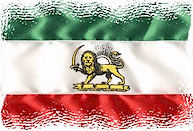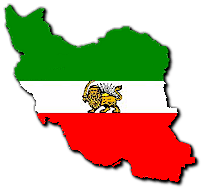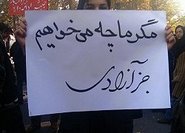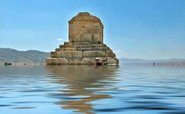December 25 ? Or why we eat turkey and sing carols?
Harry Bingham tells the story of a surprisingly home-grown festival .
STORIES BEHIND THE SONGS
Away in a manger
God rest you merry, gentlemen
Hark, the herald angels sing
The holly and the ivy
In the bleak midwinter
O come all ye faithful
Once in royal David's city
While shepherds watched their flocks by night
LISTEN TO THE CAROLS
Away in a manger
God rest you merry, gentlemen
Hark, the herald angels sing
The holly and the ivy
In the bleak midwinter
O come all ye faithful
Once in royal David's city
While shepherds watched their flocks...
Listen to your favourite carols ---- Telegraph's guide to Christmas 2007

Star turn: an ancient mosaic in Ravenna showing the three wise men
NOW THE REAL STORY OF THE WINTER CELEBERATIONS :
Merry Yalda - The Iranian Christmas By Iranian Scholar Dr. Esmail Nooriala
يلدای مهر و روشنايی بر شما شاد باد
کميته بين المللی نجات پاسارگاد
ترديدی نيست که مهمترين دليل ماندگاری ارزش های فرهنگی ايرانزمين، از آنجا است که ريشه در باور به انسان و به اهميت حضور او، به عنوان يک اصل مسلط دارد. در عين حال اين ارزش ها، حتی در قالب سنت هايي چند هزار ساله پيوند ناگسستنی انسان با طبيعت و محيط زيست او را به روشنی تاييد و تحسين می کند.
فرهنگ ايرانزمين با اين که بارها مورد تجاوز و تهاجم بيگانگان از سويي، و سرکوبی قدرت های متعصب مذهبی از سويي ديگر بوده اند، اما همچنان تا امروز زنده و شکست ناپذير باقی مانده و در ذهن مردمان ما هر روز رنگی از تازگی به خود گرفته اند.
يلدا يکی از نمودهای زيبا و ماندگار اين فرهنگ است. مراسم و ريشه ی يلدا، چه به عنوان تولد ميترا، خدای مهر و روشنايي، و چه به عنوان اسطوره ای برآمده از ارتباط انسان با طبيعت، اگر چه از هزاران سال قبل می آيد اما تفکری که در پی آن است، يعنی «باور به پيروزی غير قابل ترديد روشنايي بر تاريکی» «اهميت پاسداری از مهر، دوستی و پيمان» « اهميت احترام به نظم و قانون» تفکر انسان متمدن و صاحب حقوق بشر امروز نيز هست.
قرن هاست که انسان ايرانی هر سال با جشن و شادمانی به استقبال خورشيد گرمابخش، آن فاتح تاريکی، می رود و به ياد می آورد که آدمی طالب مهر، آرامش، رفاه و امنيت و شادمانی است و ظلم و تاريکی و جهل و اندوه شايسته او نيست. کميته نجات پاسارگاد ضمن شادباش فرارسيدن يلدای مهر و روشنايي از همگان می خواهد تا در يکی از تاريک ترين و تلخ ترين دوران های تاريخی سرزمين مان، به برگزار کردن هر چه با شکوهتر و زيباتر مراسم يلدا بپردازند و به جهانيان نشان دهند که فرهنگ ايرانی ما فرهنگ مهر، شادمانی، وفای به پيمان و آشتی و صلح است و آن چه اکنون در سرزمين ما، می گذرد، از نوع همان تاريکی هايي است که انسان سالم و با فرهنگ ايرانی، از آن می گريزد و آن را دوست نمی دارد
در عين حال لازم است که بار ديگر به لزوم حفظ و نگاهبانی از گنجينه های ملی و بشری ايرانزمين تاکيد کرده و يادآور شويم که ويران کردن هر تکه از اين ميراث های بشری به معنای ويران کردن بخشی از فرهنگ زنده و خردمداری است که می تواند سازنده فردای ما و نسل های آينده باشد
با مهر و احترامکميته بين المللی نجات پاسارگادبيست و يکم دسامبر 2007 (يلدا)
WATCH THIS VIDEO : http://tinyurl.com/28sgbc
Yalda - Shab-e Cheleh - Shab-e Yalda -
Yalda, a Syric word imported into the Persian language by the Syric Christians means birth (tavalud and melaad are from the same origin). It is a relatively recent arrival and it is refereed to the "Shab e Cheleh Festival" a celebration of Winter Solstice on December 21st. Forty days before the next major Persian festival "Jashn e Sadeh" this night has been celebrated in countless cultures for thousands of years. The ancient Roman festivals of Saturnalia (God of Agriculture, Saturn) and Sol Invicta (Sun God) are amongst the best known in the Western world. In most ancient cultures, including Persia, the start of the solar year has been marked to celebrate the victory of light over darkness and the renewal of the Sun. For instance, Egyptians, four thousand years ago celebrated the rebirth of the sun at this time of the year. They set the length of the festival at 12 days, to reflect the 12 divisions in their sun calendar. They decorated with greenery, using palms with 12 shoots as a symbol of the completed year, since a palm was thought to put forth a shoot each month. The Persians adopted their annual renewal festival from the Babylonians and incorporated it into the rituals of their own Zoroastrian religion. The last day of the Persian month Azar is the longest night of the year, when the forces of Ahriman are assumed to be at the peak of their strength. While the next day, the first day of the month "Day" known as "khoram rooz" or "khore rooz" (the day of sun) belongs to Ahura Mazda, the Lord of Wisdom. Since the days are getting longer and the nights shorter, this day marks the victory of Sun over the darkness. The occasion was celebrated in the festival of "Daygan" dedicated to Ahura Mazda, on the first day of the month "Day" Fires would be burnt all night to ensure the defeat of the forces of Ahriman. There would be feasts, acts of charity and a number of deities were honored and prayers performed to ensure the total victory of sun that was essential for the protection of winter crops. There would be prayers to Mithra (Mehr) and feasts in his honor, since Mithra is the Eyzad responsible for protecting "the light of the early morning" known as "Havangah" It was also assumed that Ahura Mazda would grant people's wishes, specially those with no offspring had the hope to be blessed with children if performed all rites on this occasion. One of the themes of the festival was the temporary subversion of order. Masters and servants reversed roles. The king dressed in white would change place with ordinary people. A mock king was crowned and masquerades spilled into the streets. As the old year died, rules of ordinary living were relaxed. This tradition persisted till Sassanian period, and is mentioned by Biruni and others in their recordings of pre-Islamic rituals and festivals. Its' origin goes back to the Babylonian New Year celebration. These people believed the first creation was order that came out of chaos. To appreciate and celebrate the first creation they had a festival and all roles were reversed. Disorder and chaos ruled for a day and eventually order was restored and succeeded at the end of the festival. The Egyptian and Persian traditions merged in ancient Rome, in a festival to the ancient god of seedtime, Saturn. The Romans exchanged gifts, partied and decorated their homes with greenery. Following the Persian tradition, the usual order of the year was suspended. Grudges and quarrels forgotten, wars would be interrupted or postponed. Businesses, courts and schools were closed. Rich and poor became equal, masters served slaves, and children headed the family. Cross-dressing and masquerades, merriment of all kinds prevailed. A mock king, the Lord of Misrule, was crowned. Candles and lamps chased away the spirits of darkness. Another related Roman festival celebrated at the same time was dedicated to Sol Invictus ("the invincible sun" Originally a Syrian deity, this cult was imported by Emperor Heliogabalus into Rome and Sol was made god of the state. With the spread of Christianity, Christmas celebration became the most important Christian festival. In the third century various dates, from December to April, were celebrated by Christians as Christmas. January 6 was the most favored day because it was thought to be Jesus' Baptismal day (in the Greek Orthodox Church this continues to be the day to celebrate Christmas). In year 350, December 25 was adopted in Rome and gradually almost the entire Christian Church agreed to that date, which coincided, with Winter Solstice and the festivals, Sol Invicta and Saturnalia. Many of the rituals and traditions of the pagan festivals were incorporated into the Christmas celebration and are still observed today. It is not clear when and how the world "Yalda" entered the Persian language. The massive persecution of the early Christians in Rome brought many Christian refugees into the Sassanin Empire and it is very likely that these Christians introduced and popularized "Yalda" in Iran. Gradually "Shab e Yalda" and "Shab e Cheleh" became synonymous and the two are used interchangeably. With the conquest of Islam the religious significance of the ancient Persian festivals was lost. Today "Shab e Cheleh" is merely a social occasion, when family and friends get together for fun and merriment. Different kinds of dried fruits, nuts, seeds and fresh winter fruits are consumed. The presence of dried and fresh fruits is reminiscence of the ancient feasts to celebrate and pray to the deities to ensure the protection of the winter crops. The Iranian Jews, who are amongst the oldest inhabitants of the country, in addition to "Shab e Cheleh" also celebrate the festival of "Illanout" (tree festival) at around the same time. Their celebration of Illanout is very similar to Shab e Cheleh celebration. Candles are lit; all varieties of dried and fresh winter fruits will have to be present. Special meals are prepared and prayers are performed. There are also very similar festivals in many parts of Southern Russia that are identical to "Shab e Cheleh" festival with local variations. Sweet breads are baked in shape of humans and animals. Bon fires are made; dances are performed that resemble crop harvesting. Comparison and detailed studies of all these celebrations no doubt will shed more light on the forgotten aspects of this wonderful and ancient festival, where merriment was the main theme of the festival. Happy Shab e Cheleh.
Courtesy of Massoume Price.
The Festival of "Yalda" (Winter Solstice Celebrations)
The winter solstice, December 21st or 22nd, is the longest night of the year. For example, this year, on 21st December London (England) will see only seven hours and 49 minutes of daylight. Near the winter solstice, the length of the day changes very slowly, as does the Sun's height in the sky - one of the reasons why the long winter nights seem to go on forever!In Iran, the winter solstice has been celebrated for centuries and it is called Shab-e yalda, which refers to the birthday or rebirth of the sun. Yalda is a Syriac word and means birth (tavalod and meelaad are from the same origin). The ceremony is traced to the primal concept of Light and Good against Darkness and Evil in the ancient Iranian religion. This night with Evil at its zenith is considered unlucky. The last day of the Persian month of 'Azar' is the longest night of the year. From this day forward, Light triumphs as the days grow longer and give more light. This celebration comes in the Persian month of 'Day', which was also the name of the pre-Zoroastrian creator god (deity). Later he became known as the God of creation and Light, from which we have the English word day (the period of light in 24 hours).The Persians adopted their annual renewal festival from the Babylonians and incorporated it into the rituals of their own Zoroastrian religion. The occasion was celebrated in the festival of 'Daygan' dedicated to Ahura Mazda, the Lord of Wisdom. Fires would be burnt all night to ensure the defeat of the forces of Ahriman (principle Evil). There would be feasts, acts of charity and a number of deities honoured and prayers performed to ensure the total victory of the sun that was essential for the protection of winter crops. There would be prayers to Mithra (Mehr) and feasts in his honour, since Mithra is the Eyzad (deity) responsible for protecting " the early morning light", known as 'Havangah'. It was also assumed that Ahura Mazda would grant people's wishes.Early Christians took this very ancient Persian celebration and linked it to Christ's birthday. Today, the date for Christmas has slightly changed, but there are many similarities such as, lighting candles, decorating trees with lights, staying up all night, singing and dancing, eating special foods, paying visits to family and friends, ...
Traditions:
In the evening of Shab-e Yalda bonfires are lit outside, while inside the home, family and friends gather in a night-long vigil around the korsi, a low, square table covered with a thick cloth overhanging on all sides. A brazier with hot coals is placed under the table. In the past, fruit and vegetables were only available in season and the host, usually the oldest in the family, would have carefully saved grapes, honeydew melons, watermelons, pears, oranges, tangerines, apples, and cucumbers. These were then enjoyed by everyone gathered around the korsi, or a fireplace.On this night, the oldest member of the family says prayers, thanking God for previous year's blessings, and prays for prosperity in the coming year. Then he cuts the melon, and the watermelon and gives everyone a share. The cutting symbolizes the removal of sickness and pain from the family. Snacks are passed around throughout the night: pomegranates with angelica powder (gol-par) and Ajil-e shab-e yalda, a combination of nuts and dried fruits, particularly pumpkin and watermelon seeds and raisins. This mixture of nuts literally means night-grazing; eating nuts is said to lead to prosperity in days to come. More substantial fare for the night's feast include eggplant stew with plain saffron-flavored rice, rice with chicken, thick yogurt, and halva (saffron and carrot brownies). The foods themselves symbolize the balance of the seasons: watermelons and yogurt are eaten as a remedy for the heat of the summer, since these fruits are considered cold, or sardi; and halva is eaten to overcome the cold temperatures of winter, since it is considered hot, or garmi. On into the night of festivities the family keeps the fires burning and the lights glowing to help the sun in its battle against darkness. They recite poetry and play music, tell jokes and stories, until the sun, triumphantly reappears in the morning.
جـشـن در ایران


ما که بـه آواز سیمـُرغ
سخن میگفته ایم
چرا رقصیدن در اندیشیدن ِ
به آوازسیمرغ را
فراموش کرده ایم؟
منوچهرجمالی
بزرگترین آماج فرهنگ ایران، «زندگی کردن به کردارجشن» بود. زندگی درگیتی، باید « جشن همیشه تازه » باشد . هر روز از زندگی ، باید ، جشنی دیگرباشد. این آماج ، بافـت ِ « دین وخـدا » ، وروش ِ« جهان آرائی = سیاست وحکومت» ، و ساختـار ِ« اقتصاد» را معین میسازد .« زمان »، هرروزجشنی دیگر، و گـُلی دیگر، و آهنگ وترانه ای دیگر، و خدائی دیگر میشود( آنچه که امروز دراصطلاح سکولاریته ، عرضه میشود ) زمان وزندگی باهمند . زندگی، دگردیسی جشنی درزمان است . این آرمان ، هنگامی واقعیت پذیر بود که « بُن یا تخم جشن ِهمیشه تازه شونده » که « فرشگرد » نامیده میشد ، درگوهر هرانسانی باشد . پیشوند « فرش» درفرشگرد، همان معنای « فرشک » درکردی را داشته است که « آغوز و پنیرمایه » میباشد . آغوز، شیرجانورتازه زائیده است و مایه ،« اصل تحول دهنده» است . « زندگی» ، این« آماج یا مزه ویا معنا » را درخود، نهفته وپوشیده دارد . هیچکسی وهیچ قدرتی و هیچ آموزه ای ومذهبی وعقیده ای وعلمی ، ازفراسوی انسان ، به زندگی ، مزه وغایت ومعنا نمیدهد . هرانسانی، آبستن به آنست .این تخم ، همان زندگی بود که « جی= ژی= زی » نامیده میشد، و همین « جی= ژی= زندگی » ، نام خودِ مادر ِزمان واصل زندگی ، « رام » بود ، که « خرّم و فرّخ » هم نامیده میشد . به عبارت دیگر، گوهرجداناپذیراز زندگی هرانسانی، خدا یا، اصل خرّمی و فرّخی هست، و بدینسان زندگی خرّم، قداست دارد، وخدائیست . خدا، چیزی جز« اصل همیشه تازه شوی زندگی ، و اصل جشن سازی همیشگی » نیست. این بُن یا « تخم جشن همیشه تازه شونده » ، ازخوشه ای بود که « خوشه همه جانها، وهمه انسانها، یا همه هستان » بود ، و نام آن ، « ارتای خوشه، یا سیمرغ، یا سئنا، یا سین، یا سن، یا صنم » بود، وتخم همین « خوشه جشن ساز» که خدا باشد، درتن هرانسانی ، تخم خودرا افشانده و کاشته بود . تخم ِ خوشه خدای جشن سازیا مطرب ، نطفه در زهدان وجود هرانسانی شده بود. واژه های « خوشه » وخوش(= زهدان) و قوش ( باز) یک واژه اند . همچنین « وشی » که خوشه( کردی) باشد و به معنای نوزائیست ، درتبری به « باز» هم گفته میشود . پروازپرنده ، پیکریابی اندیشه ازنو، خوشه شوی ، از سر، به کمال رسی ، ازسر، اصل نوآفرینی شوی بوده است . چنین ویژگی، گوهر خدا هست . همچنین درتـُرکی ،« بوغدایتو»، نام هماست . این نام ، دو معنا دارد . بوغدای + دایتی که به معنای« خدای خوشه گندم » است . ودراین ترکیب ِ« بوغ + دایتی» ، به معنای « نی – خدا» هست. نام دیگر هما درترکی « لوری قوش» هست که به معنای مرغ ِ سرودگوی هست ( لوری دربرهان قاطع به معنای سرودگوی ) . همچنین واژه « جشن » که « یسنا = یز+ نا » باشد ، دراصل، به معنای « سرود نای » است . معنائی که الهیات زرتشتی به « یز، و یزدان وایزد » میدهد ، برای تحریف ذهن ازگوهراصلی خدا است . ایزد و یزد و یزید و یزدان ، به معنای « خدای موسیقی وسرود وجشن » است. ایزد، اصل سرودن وجشن سازی و خرّم سازی است . واژه « دین » هم که « دا ئنا = داء + نای » باشد به معنای « نای، یا زهدان واصل نوازنده ، و اندیشنده ، وآفریننده ، و شیردهنده ... » میباشد .ازاین رو هست که دروندیداد ( اوستا ) مرغ « کرشیپ » هست که دین را به شهرجمشید ( =جم ، فرزند ِنای است. شیت= جید= چیت، نای است )، نخستین انسان، که فرزند سیمرغست ، میآورد. این اصل وسرچشمه همیشه نوشوی زندگی است که بنیاد گذار دین ، یا بینش زایشی و بینش جشنسازمیباشدJashne Deagan - شب يلدا Khodi Kaviani & Haideh Esfahani . « مرغ » ، پیکریابی این« آرمان زندگی » بوده است . افسانه سازی سیمرغ یا عنقا ( عنق= نی= گردن وحلق هست ) یا هما (= هو+ مایه = مادربه ، یا آب ِبه، آب، آوه یا آپه ، معنای شیرابه کل هستی را داشته است ) ، پیکارپیروان میتراس و موءمنان به اهورامزدای زرتشت ، برضد این آرمان زندگی بوده است، و هنوزنیز هست .
Jashne Deagan - شب يلدا Khodi Kaviani & Haideh Esfahani
Taraneh baraye Jashne Deygan dar Mahe Dey. Dar Mahe Dey 4 Bar Jashne Deygan Gerefte Mishe, ke "Shabe Yalda" faghad yeki az baghimandehaye inast.
Santa Claus
St Nicholas, also known as Santa ClausBy Jonathan Petre : Father Christmas is inescapably associated these days with the jingling tills and shopping mall grottos of the modern Christmas.
Santa "mistreats his elves and tricks children"
Telegraph.co.uk guide to Christmas 2007
So it is easy to forget that beneath the roly-poly, scarlet-coated, ho-ho-hoing secular exterior there beats the heart of a saint.St Nicholas' appearance was finally defined by a Coca-Cola advertising campaign in 1931- The transformation of St Nicholas, an obscure fourth-century bishop, into the star of the retail trade and Hollywood schmaltz has involved a few facts, layers of legend and a generous sprinkling of savvy American marketing.Little is know of the historical St Nicholas, not even whether he was particularly plump or jolly, though he almost certainly wore a beard.But his reputation for generosity and for giving gifts anonymously have survived down the centuries and, say his admirers, he is the last remaining link with the true spirit of Christmas.What we do know is that he was born in the third century in Patara, an important port on the southern coast of what is now Turkey. After the death of his wealthy parents, he reputedly inherited a fortune, much of which he gave away. He was eventually elected a bishop of the nearby city of Myra, and almost certainly suffered persecution and imprisonment at the hands of the Roman Emperor Diocletian. He is listed among the participants of the First Council of Nicaea, which formulated the Creed that is still adhered to today, and even supposedly slapped another bishop in a squabble over the nature of the Trinity.St Nicholas is believed to have died in Myra in AD 343, and his cult spread after his bones were stolen by Italian sailors and taken to a crypt in Bari in the heel of Italy in the eleventh century. Because of the often miraculous legends that have attached to him over time like tinsel on a Christmas tree, he has been adopted as a patron saint of numerous causes, from sailors and merchants to archers and
children.The most enduring story, however, tells of a poor man who had three daughters but could not afford a proper dowry for them, leaving them facing the prospect of remaining unmarried and even being forced into prostitution. Wanting to help, but being too modest or shy to do so publicly, Nicholas went to the man's house at night and threw three purses filled with gold coins through the window. One of the many versions of the story has him throwing in one purse on three successive nights.Another has him drop one of the bags down the chimney to avoid being spotted by the father; a variant on this has the bag falling into a stocking drying above the fire.In yet another version, the father does confront the saint, only to have Nicholas say that the man should thank God alone. As a result of this association, Nicholas is the patron saint of pawnbrokers; the three gold balls that traditionally hung outside a pawnshop symbolise the three sacks of gold.The historical Nicholas is still revered among Roman Catholic and Orthodox Christians, and he is honoured by a number of Anglican and Lutheran churches. No fewer than 500 churches claim his patronage in Britain, 400 of them in the Church of England.In much of Europe, where the veneration of saints remains part of popular culture, St Nick appears in a variety of forms - in some cities he rides through the streets on a horse - and children receive models of a jolly bearded bishop.In this country, he was the basis for Father Christmas, who emerged during the Victorian era as a jolly-faced and bearded character, usually wearing holly on his head.But the familiar modern creation was born in America, where Dutch settlers had taken their Christmas customs; their Sinter Klaas and the German Sankt Niklas metamorphosed into Father Christmas.His main progenitor was Clement C Moore, a New York Episcopal minister, who is not remembered for his life work, the Hebrew and English Lexicon, but for a poem he composed for his children, "The Visit of St Nicholas", now universally known by the title based on its first line, "The Night Before Christmas". Published in 1822, he gave the world St Nicholas as a nocturnal Christmas gift bringer with sleigh, reindeer and a sack of toys on his back, who enters the house down the chimney and fills children's stockings with toys and sweets. According to the verses, St Nicholas had by now developed a portly shape - "a little round belly/ that shook when he laughed like a bowlful of jelly". He was also pink-cheeked and dressed in furs; "His eyes - how they twinkled! His dimples how merry!/ His cheeks were like roses, his nose like a cherry!/ "His droll little mouth was drawn up like a bow,/ And the beard of his chin was as white as the snow." But the poem neglected to describe his costume, or even mention its colour, and he was depicted in a variety of outfits and a range of colours over the following decades. His physical appearance was finally defined in the well-known Coca-Cola advertising campaign of 1931, when fat Father Christmas in a red coat trimmed with fur and secured with a large belt became the universally accepted image. This somewhat saccharine secular figure, who has perhaps more in keeping with pagan midwinter festivities than with the sombre St Nicholas, is now the ubiquitous presence at this time of year. Indeed, the Father Christmas myth has spawned its own academic industry, with anthropologists and sociologists offering rival analyses of his role in our psyche.One Sheffield University professor devised the bizarre-sounding theory that the traditional image of the flying Father Christmas owes a great deal to an hallucinogenic "magic" mushroom used in Lapp societies in northern Europe. Even physicists such as the Daily Telegraph's own Dr Roger Highfield have attempted to work out how Father Christmas could travel around the world to deliver presents to every child in just one night. He has calculated that the elderly gentleman would have to travel 221 million miles at an average speed of 1,279 miles per second, 6,395 times the speed of sound.For all those dads about to unpack the fake beard and red coat to delight, or terrify, their children this Christmas, that is a sobering thought indeed.
The saintly CV
· St Nicholas was born circa AD 260 in Patara, in what is now Turkey
· Became Bishop of Myra and was probably jailed by Emperor Diocletian. Attended Council of Nicaea in 325.
· Died in 343, possibly on December 6. His relics were removed in 1087 to Bari, Italy
· Gradually transmogrified into Father Christmas in this country (and Santa Claus in the United States)
· Familar image of red coated Father Christmas became universal after 1931 Coca-Cola advertising campaign
Santa 'mistreats elves and tricks children'By Fiona Govan in Madrid
Santa Claus is an overweight clown in red pyjamas who mistreats elves and tricks generations of children into believing reindeer can fly, according to a Spanish advertising campaign that hopes to remind the nation of the real magic of Christmas.
Watch the three rapping kings video
How About That: More weird news from around the world
Your complete guide to Christmas 2007
Spanish children traditionally received their Christmas presents on January 6, when parades are held to commemorate the journey of the Three Kings who, guided by the Star of Bethlehem, brought gifts of gold, frankincense and myrrh to the infant Christ.But in recent years Father Christmas has hijacked the traditional festivities helped by Hollywood films and shops eager to use his image to persuade parents to buy more toys and Spanish children now expect their presents delivered via the chimney on Christmas Eve.A Spanish advertising agency is now fighting to win back the festive season for Caspar, Melchior and Balthasar, the three wise men from the East. read it here : http://tinyurl.com/2qwjka
We three kings of Orient aren't
The Archbishop of Canterbury has questioned the story of the three wise men but, argues Christopher Howse, this does not change the message of Christmas .
Transcript: Archbishop's interview with Simon Mayo
Damian Thompson: Another of Rowan Williams' own goals
What's this? Has the Archbishop of Canterbury, Dr Rowan Williams, said that the Three Kings didn't exist? Well, not quite. "St Matthew's Gospel," he remarked in a radio discussion, "says they're astrologers, wise men, priests from somewhere outside the Roman Empire. That's all we're really told." But think how deeply these three men have entered our imagination as part of the Christmas story. "A cold coming they had of it at this time of the year, just the worst time of the year to take a journey, and specially a long journey, in. The ways deep, the weather sharp, the days short, the sun farthest off, in solstitio brumali, the very dead of winter." Those words, in a tremendous sermon by Lancelot Andrewes that King James I heard on Christmas Day 1622, were brilliantly stolen by TS Eliot and incorporated into his poem The Journey of the Magi. And we can see it all: the camels' breath steaming in the night air as the kings, in their gorgeous robes of silk and cloth-of-gold and clutching their precious gifts, kneel to adore the baby in the manger. Yet, that is not entirely what the Gospel says. The wise men, as Dr Williams points out, figure only in the Gospel according to St Matthew. That's no surprise, since Mark and John do not give accounts of the infancy of Jesus. St Matthew tells of them in just 12 verses, beginning: "Now when Jesus was born in Bethlehem of Judaea in the days of Herod the king, behold, there came wise men from the east to Jerusalem, saying, 'Where is he that is born King of the Jews? For we have seen his star in the east, and are come to worship him.'" It doesn't say they were kings, or that there were three of them. We suppose they were three because they brought gold, frankincense and myrrh. From the earliest times these gifts were accorded mystic significance: gold for kingship, incense for worship, and myrrh for anointing, just as Christ was anointed with precious spices for his tomb.





























 اخبار مربوط به زندانیان سیاسی و نقض حقوق بشر
اخبار مربوط به زندانیان سیاسی و نقض حقوق بشر
















 Tulips in Holland
Tulips in Holland












No comments:
Post a Comment